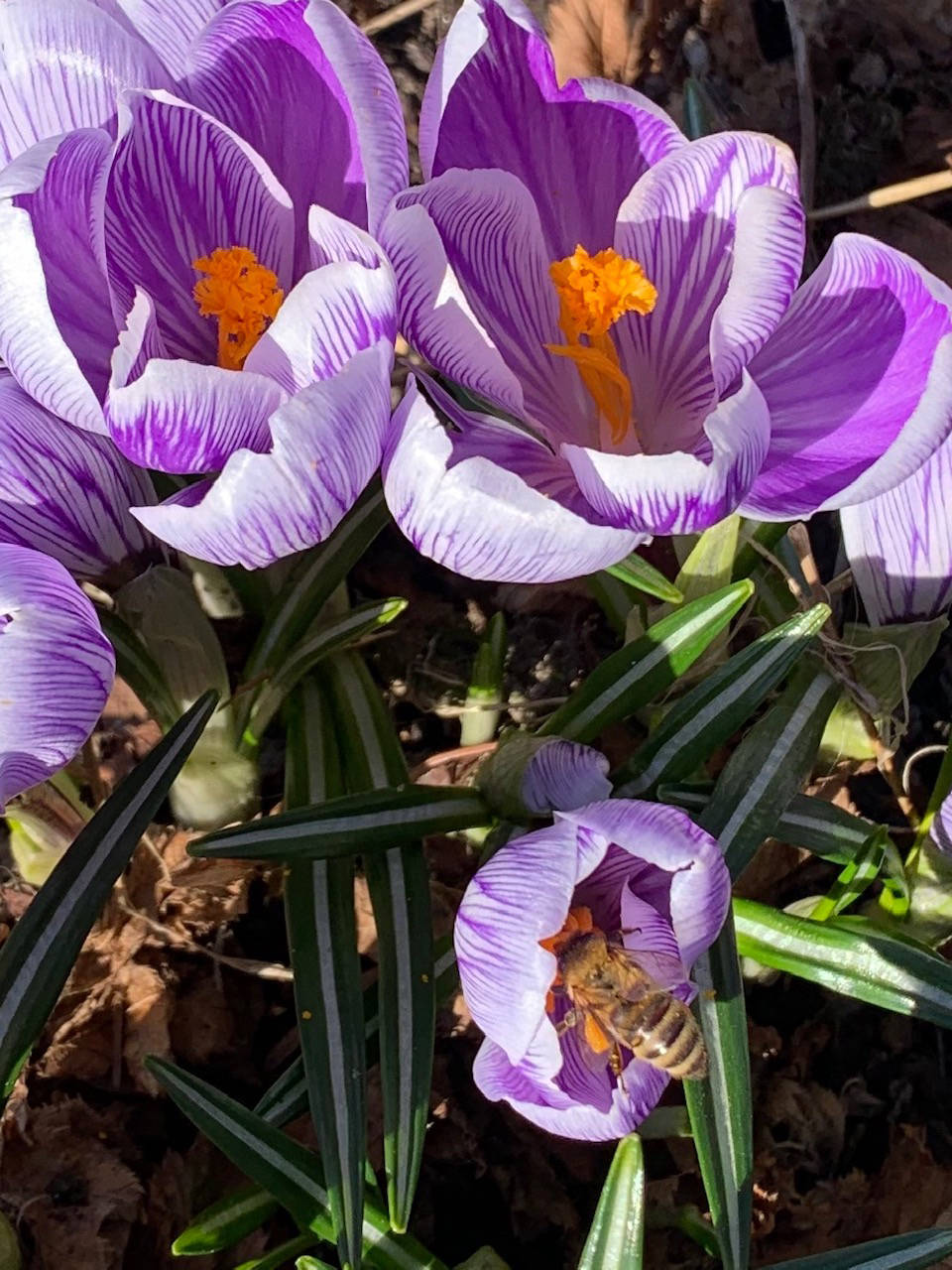I have been trumpeting my crocus population to one and all, practically begging friends to come and luxuriate in their presence. To my eye they are truly spectacular. They are early and each clutch that I have planted over the years has multiplied to about 20 hefty bouquets scattered among the perennial beds.
But — I’m not getting the awe factor that I expected. The kudos. The gratification. The pats on the back. No. I’m getting blank expressions on otherwise open, intelligent faces. The bloom is not meeting expectations.
I have thought about this and here is my conclusion: The crocus do not look like they do in magazines — thousands and thousands in sweeping drifts of early, clear color. Not mine, not here at latitude 59 degrees north. I’m grateful to have any at all. And that says it all — grateful. And they are MY crocus, and I love them.
Expectations be damned.
If you don’t have any of these very early blooms from bulbs, consider planting some this fall. I like to plant them in a clutch, like so many eggs and let them get on with it. The clutches have multiplied in leaps and bounds this season. Scilla, chinodoxa, pushkinia, three kinds of little daffodils are all waiting their turn to shine and are on the verge of bloom. Glorious.
You never know what spring weather holds for us. So many people are asking me how early this season is and what they should “do” about it. Do? I’m not a seer. Look at the weather channel; there is snow in our immediate future. Don’t fear it. It will add nitrogen to the soil.
It has been written over and over again that peas can be planted as soon as the soil can be worked. Well, my vegetable plot is still wet but I poked some soaked pea seeds into a bed, and then some spinach. If they sprout and thrive, well then I’ll have early peas and spinach. If not, I’ll start over again. You can do this too. See what happens. Let me know. But I covered them with floating row cover. This will add a bit of warmth to the soil, and if they sprout, will keep the birds at bay.
I cleaned up the raspberries in the fenced area of the garden. There is also a row along the driveway, but I haven’t gotten to them yet. You can tell which cane to remove — it will actually look old. The base will be split, and you’ll see where last year’s harvest was. For some reason I need to do this twice a season. In a few weeks there will be more canes that seem to need removal. I’ll just do it. But once would be nice.
I have taken advantage of this excellent weather and cleaned the perennial beds. I leave all the spent foliage over winter to act as a mulch, but I’m questioning this practice. I don’t like looking at all that dead twiggy detritus even though I have laid it down on the ground. But I don’t need to think about this until next year. For now, everything is as neat and tidy as it will ever get. The garden won’t look this virginal until next spring. It brings a certain level of peace to the cultivated landscape that I appreciate. Keep in mind that our property abuts nine acres of meadow and forest, and I saw a black bear a week ago sauntering along without a care in the world. We have the best of both worlds.
On to the greenhouse. There is room for five tomato plants, each one different. The tried and true, the stalwarts — Brandywine, Black Japanese Trefele, Sakura and Sungold — are joined by a new one, Black Pearl, because I need to try a new one every year. I usually plant two Brandywine, but Sakura was a new one last year and needs a repeat. Delicious, although my favorite is Black Japanese Trefele (Johnny’s Seeds). There are four lettuce plants and a short row of radish, all thriving. There is a little heat out there. A high/low thermometer indicates that the low has been dipping to 36 degrees and the plants seem to be none the worse for wear. Actually they seem to thrive on the cooler temperatures, just not freezing.
I’ve started all of the cole crops and four more lettuce. These are all in four packs with the intention of moving them on to larger pots. This will be handy if this early spring is a false hope.
Only four lettuce plants at a time, every ten days — that way I’m not sending them off to the compost, and they are getting consumed, which is the point.
If you are creating a new plot, keep in mind that laying cardboard atop the grass will save you a ton of work. Shovel some topsoil on it and you’ll be ready to plant something once the weather settles.
I could go on and on. It’s that time of year.
NOTE: A garden is at its peak every day; enjoy it every single day.
Rosemary Fitzpatrick is a longtime Homer gardener and has been writing Kachemak Gardener since 1990.


